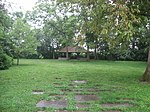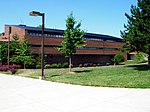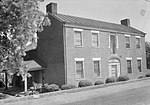Turpin site
Archaeological sites in Hamilton County, OhioArchaeological sites in OhioArchaeological sites on the National Register of Historic Places in OhioArchaeological type sitesFort Ancient culture ... and 2 more
National Register of Historic Places in Hamilton County, OhioUse mdy dates from August 2023

The Turpin site (33Ha19) is an archaeological site in the southwestern portion of the U.S. state of Ohio. Located near Newtown in Hamilton County, the site includes the remains of a village of the Fort Ancient culture and of multiple burial mounds. Numerous bodies have been found in and around the mounds as a result of thorough site investigations. The archaeological value of the site has resulted in its use in the study of similar locations and in its designation as a historic site.
Excerpt from the Wikipedia article Turpin site (License: CC BY-SA 3.0, Authors, Images).Turpin site
Turpin Lane,
Geographical coordinates (GPS) Address Nearby Places Show on map
Geographical coordinates (GPS)
| Latitude | Longitude |
|---|---|
| N 39.123 ° | E -84.372 ° |
Address
Turpin Lane 3343
45244
Ohio, United States
Open on Google Maps









